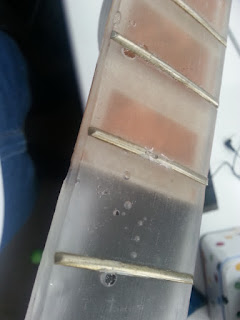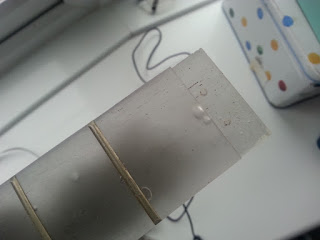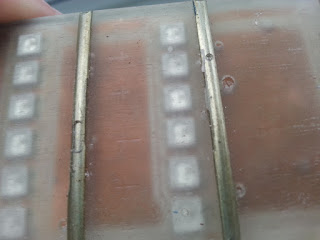The stiffness of the board was very good. Although resin has a reputation for being very brittle, the added fibreglass gave it a solid, strong feel. The finish, however, was not so good.
There were large air bubbles throughout the length of the neck, and at differing depths. Because the resin was "clearcast" even bubbles in the centre of the neck thickness were clearly visible.
Some of the frets were also completely encased in resin (and a couple almost completely encased, except where an air-bubble exposed a small part of the fret wire, completely destroying the appearance of a nice, clean, shiny wire!)
But worst of all, some of the frets had shifted while the resin was being added to the mould. This is ultimately a killer for the idea. Because the frets had twisted around, there were no longer equally spaced to 1/12 along the length of the neck. If this fingerboard were are put onto a guitar, the intonation would be all over the place!
(this photo was taken after a later experiment, adding dyed resin to the back, so see if we could create a "smoky glass" effect. It didn't work!)
In short, resin casting the fingerboard seemed like a good idea at the time. But in practice, it gives very inconsistent results, and would be very difficult to replicate consistently. Back to the drawing board.....





No comments:
Post a Comment